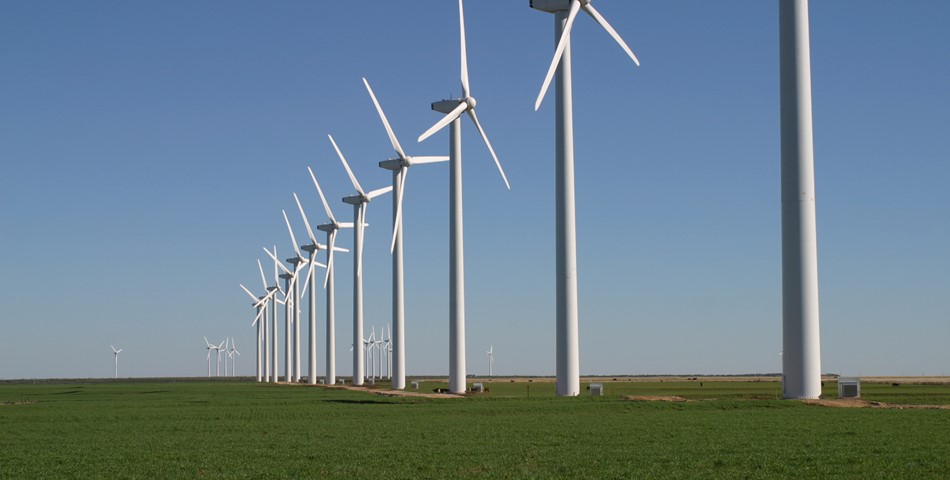MAKE forecasts annual wind power capacity additions to average more than 65GW from 2018 to 2027, resulting in a Compounded Annual Growth Rate of 4% over the period.
Incentive expirations and markets adjusting to new auction mechanisms influence a run-up to 2020, with a more than 30% increase in annual capacity additions from 2017 to 2020. The realization of offshore ambitions and sustained momentum from emerging markets globally contribute to a second 30%+ period of growth from 2023 through 2027.
Success over the next 10 years will depend on the global wind power industry’s ability to continue winning capacity awards at auction, and even more so to execute awarded capacity on time and within budget. The precipitous drop in pricing globally over the last year, particularly in the offshore sector, is certainly a rallying point for industry achievement, but it needs to be proven.
In North America, the US wind power industry avoided complete disaster through tax reform negotiations at the end of 2017, but the new policy has impacted project timelines and pushed some capacity into the 2019 to 2020 growth bubble. Safe harbor wind turbine deals signed at the end of the year support build in 2021, but annual new capacity drops off considerably post 2021 (nearly a threefold decrease in average annual capacity from 2022 to 2027 compared to the four years prior) as the value of the production tax credit drops below 80%.
A full auction schedule across Latin America in 2018 (auctions are expected in Brazil, Mexico Argentina, Colombia, and Peru) will result in a CAGR in the sub-region that exceeds 14% over the 10-year outlook. The return of wind auctions in Brazil last December, combined with an A-4 auction in 2018, helps return growth to a market that has recently suffered from economic turmoil. Near-term growth in the sub-region is buoyed by execution of auction results in Argentina, Chile and Mexico, until other markets contribute to sustained growth from 2020 through 2027.
The outlook in Europe depends increasingly on success in the offshore wind sector, which accounts for more than a quarter of new capacity added over the 10-year outlook. In Northern Europe, the share of offshore burgeons to 50% of new capacity, with the UK accounting for the majority of this offshore flourish. Denmark (near-term) and Sweden and Ireland (long term) also contribute to the share of offshore capacity. The onshore sector is led by a burst of final investment decisions in Sweden for projects scheduled for 2018 to 2020, as developers try to secure green certificates.
The outlook in Western Europe is less dependent on offshore wind compared to Northern Europe, but adds 10% more offshore capacity over the next 10 years, with France, Germany and the Netherlands each adding more than 5GW of offshore wind capacity.
Germany and France dominate the onshore sector in Western Europe. Strong policy in France supports consistent 1GW+ annual additions whereas the build requirements of auctioned awards in Germany cause a two-year peak in 2021 and 2022.


The long-term forecast in Germany benefits from the repowering of onshore wind assets – 23% of new onshore capacity added in Germany over the 10-year outlook will come from repowering, which represents more than 40% of all repowered capacity in Europe over this period.
In Southern Europe, Spain and Turkey will add more than 13GW of wind power capacity over the outlook, with Italy’s new energy plan helping to boost the sub-region to more than 40GW of new capacity added over 10 years. The first auction projects in Spain will come online in 2018 and cause a spike in growth in 2019. Approval of wind power licenses and hints at an offshore auction in Turkey result in growth in annual capacity additions from 2022 to 2027.
Markets in Eastern Europe have struggled to secure steady footing, but will achieve annual additions exceeding 1GW from 2019, as buildout in Ukraine continues and project realization in Russia starts to stabilize. The advent of Poland’s offshore sector in 2024 initiates a new level of annual capacity as the sub-region averages more than 2GW from 2024 to 2027.
Annual capacity additions in the Middle East and Africa will nearly triple in 2027 compared to 2018, as emerging markets gradually develop over the outlook. The expected signing of power contracts in South Africa and the award of 1.2GW of wind contracts in Saudi Arabia provide the foundation, but growth in Iran and Egypt also contribute significantly to a CAGR of 26% over the outlook.
In Asia and Oceania, capacity additions in China have been impacted negatively by the NEA’s warning mechanism, but as curtailment levels lessen and wind power consumption increases, annual capacity levels will rise. The more favourable warnings issued in 2018 will restart construction in several northern provinces, boosting the near-term outlook. China’s offshore sector will mature quickly, free from the transmission constraints plaguing traditional onshore wind bases, with annual capacity additions exceeding 3GW in 2022 through 2027.
National target deadlines in Australia (2020) and India (2022) largely shape the medium-term outlook in the rest of Asia Pacific. Large projects and a considerable order backlog will yield 1GW+ years in 2018 and 2019 before a downturn following a void in national policy support. India will experience an adjustment year in 2018, but as auction projects start to come online, the market will grow annually through 2022 to meet the target.
A number of emerging onshore markets in the rest of Asia contribute to the second largest region behind China in terms of new capacity added over the 10-year outlook. Improving regulatory environments combined with new turbine technology has created opportunity in Thailand, Pakistan, Vietnam and other markets, which in aggregate add more than 9GW over the outlook.
Taiwan highlights a host of Asian markets investing heavily in offshore wind power development. Offshore wind comprises more than 25% new capacity for Japan and South Korea over the 10-year outlook and a staggering 96% of new capacity for Taiwan. Excluding China, the offshore sector in Asia will achieve a CAGR of 45% over the outlook period, averaging more than 1.7GW of new capacity per year from 2022 to 2027.
Global firm turbine order intake decreased 6% YoY in Q4/2017 to 14.6GW, primarily due to less order capacity in the US as the drop in production tax credit value impacted demand. Heightened competition in China as a result of the red warnings decreased the willingness of turbine OEMs to announce orders publicly, which influenced a 13% drop in order intake YoY for all of 2017. Excluding China, global firm turbine order intake for all of 2017 is modestly less than in 2016, but still amounts to the second largest volume of order capacity recorded.











